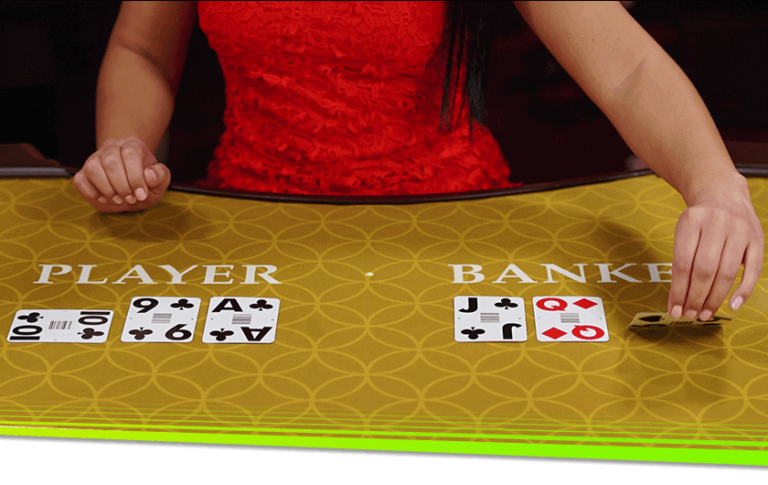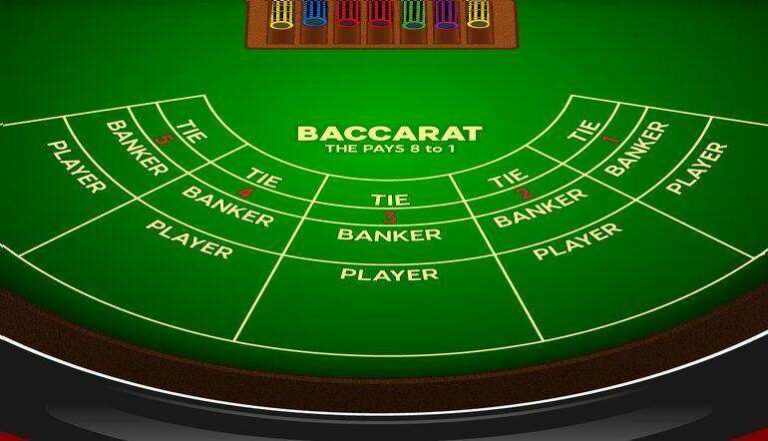
Learning what are poker outs and how you can use them to make good decisions during hands is one of the crucial steps to becoming a winning poker player.
Today we are explaining everything about outs in poker, how to calculate them, and a few tips and tricks that will help you make faster calculations during hands.
What Are Outs In Poker?
In poker, cards that can improve a player’s hand are called outs.
For example, if you have A♠K♠ and the board is Q♦7♠2♠, you are essentially holding an A high flush draw.
This means that you don’t have a made hand; instead you are drawing to a flush.
In this situation, a spade on the turn will most likely give you the best hand. There are 13 cards of each suit in a 52-card deck. When we discount the two spades in your hand and two spades that are on the board, we are left nine spades in the deck.
In this case, you have 9 outs to the flush: 3♠4♠5♠6♠8♠9♠10♠J♠Q♠.
You could also argue that an Ace or a King also gives you the best hand, this would increase the number of your outs from 9 to 15 (adding A♦A♣A♥ and K♣K♦K♥).
However, unless you are pretty confident that your opponent has a hand that would be beaten by an Ace or a King it is better to count only the cards that give you the strongest hand possible in this situation.
- 1

Excellent MTT fundaments and advanced topics
Great structure to keep improving your game
Interactive learning approach with quizzes and homeworks
Score
9.5/10
Show me Review
How Are Outs in Poker Calculated?
To calculate your outs, you first need to ask yourself which hand you need to make to be stronger than your opponent in this situation.
As you can see in the example above, we decided that hitting a flush would be enough.
Now after you decide which hand you need to hit, you need to think about which cards will help you make these hands.

As evident from the above example, we had an easy job because all of our outs were spades.
Finally, you need to discount all of the cards that are known from those outs. In our example, we discounted both of our hole cards because they were spades and both of the spades from the board.
Most Common Outs in Poker
After some time, counting outs will become second nature to you, however until then, one of the ways to learn how many outs you have is to memorize this table with the most common situations and outs in No-Limit Texas Hold’em.
Poker outs table
| Hand | Number of outs |
| Pocket pair to set | 2 |
| Overcard | 3 |
| Inside straight draw (gutshot) | 4 |
| Two pair to full house | 4 |
| Two overcards | 6 |
| Set to a full house or four of a kind | 7 |
| Open-ended straight draw | 8 |
| Flush draw | 9 |
| Inside straight flush draw | 12 |
| Open-ended straight flush draw | 15 |
Don’t Double Count Your Outs
You will find yourself in a lot of situations where you have a hand that can improve in multiple ways, for example, you can hit both a straight and a flush. These draws are called combo draws.
In these situations, be careful not to double count your outs. What do we mean by that? Well if you look at the table you will see that there are 9 outs for a flush and 8 outs for an open-ended straight draw.
You might assume that it is enough to add these two numbers (8+9) and you will get the exact number of outs for your hand (17).
Now let’s look at an example and test this theory.
Let’s say you have J♦10♦. Your opponent has 5♥5♣ and the board is Q♠9♦4♦3♠.
Let’s count many outs do you have in this situation:
- You have two overcards to pocket fives, which means 3 outs for the J (J♠J♥J♣) and 3 outs for the T (10♠10♥10♣), a total of 6 outs
- A King or an 8 will give you a straight, which means 4 outs for the Kings and four outs for the eights a total of 8 outs
- A diamond will give you a flush. There are 13 diamonds in the deck minus the two in your hand, the two on the board, a total of 9 outs A♦K♦Q♦8♦7♦6♦5♦3♦2♦.
At first it seems that adding outs from different draws would be correct (3+3+8+9) the results are the same as in the table.
Now let us take a look at all of the outs we counted.
J♠J♥J♣10♠10♥10♣K♠K♣K♦K♥8♠8♣8♦8♥A♦K♦Q♦8♦7♦6♦5♦3♦2♦
Do you notice anything now? We have double-counted the K♦., for the straight and the flush. The same goes for the 8♦.
After we deduct the two outs we double-counted we no longer have 23 outs. Instead, we have 21.
How to Calculate Poker Odds – The Long Way
Now that you know how to calculate outs in poker, it is time to learn how you can use the number of outs to calculate poker odds or in other words to calculate the chances of hitting your hand.
Now, imagine the next scenario,
You are holding J♠8♠ on a board of A♠K♠3♦2♥.
Essentially you have a flush draw, and as we calculated in the examples above there are 9 (13 unseen – 4 seen cards) spades in the deck that will improve your hand to a flush.
So how can you use this information to calculate your chances of winning the pot?
Let’s break it down using the information we know:
- 9 cards will improve our hand
- There are 46 cards left in the deck (when we subtract two cards in our hand and four cards on the flop, we will not take into account opponents card because we don’t know what he is holding)
This means that there are 9 cards in the deck that will help us and 37 cards (46-9) that will not improve our hand.
Cards that improve our hand:
- Q♠10♠9♠7♠6♠5♠4♠3♠2♠
Cards that don’t improve our hand:
- A♥K♥Q♥J♥10♥9♥8♥7♥6♥5♥4♥3♥.
- A♦K♦Q♦J♦10♦9♦8♦7♦6♦5♦4♦2♦
- A♣K♣Q♣J♣10♣9♣8♣7♣6♣5♣4♣3♣2♣
In this situation, our odds of improving are 37:9 or approximately 4.1 to 1.
If we convert it to percentages 1 / (4.1 + 1) * 100 = 1 / 5.1 * 100 = 0.196 * 100 = 19.6%
The odds for hitting a flush on the river in this situation are 19.6%.
Poker Odds Table
We know that it is not practical to go through this whole process each time you have a decision and most poker players don’t.
One of the ways you can speed up your decision-making in this situation is by memorizing the poker odds table.
| Hand | Number of outs | Turn | River | Turn & River |
| Pocket pair to set | 2 | 4.3% | 4.3% | 8.4% |
| Overcard | 3 | 6.4% | 6.5% | 12.5% |
| Inside straight draw (gutshot) | 4 | 8.5% | 8.7% | 16.5% |
| Two pair to full house | 4 | 8.5% | 8.7% | 16.5% |
| Two overcards | 6 | 12.8% | 12.8% | 24.1% |
| Set to full house or four of a kind | 7 | 14.9% | 15.2% | 27.8% |
| Open-ended straight draw | 8 | 17% | 17.4% | 31.5% |
| Flush draw | 9 | 19.1% | 19.6% | 35% |
| Inside straight flush draw | 12 | 25.5% | 26.1% | 45% |
| Open-ended straight flush draw | 15 | 31.9% | 32.6% | 54.1% |
The table should be used in the following way (using an example of a flush draw)
If you have a flush draw on the flop, and your opponent bets with a non-all-in sizing, you should be using the turn column to see what your chances of hitting your hand on the turn are.

If you have a flush draw on the turn, and your opponent bets with a non-all-in sizing, you should be using the river column to see what are your chances of hitting your hand on the river are.
If you have a flush draw on the flop, and your opponent goes all-in, you should be using the Turn & River column to see what the chances for hitting your hand on the urn or the river are.
How to Calculate Poker Odds The Easy Way – The Rule of 4 and 2
Now that you understand the math behind calculating poker odds, it is time for you to learn the rule that will make calculating poker odds much easier.
The rule of 4 and 2 is a simplified method of calculating poker odds on the turn or the river.
If there are two cards to come you need to multiply your outs by 4 and if there is one card to come you need to multiply your outs by 2.
Let’s say you are holding A♣K♣ and the flop is Q♣7♣5♦. Your opponent bets.
Now you want to find out what are the chances of hitting your flush on the turn with the 4 and 2 rule.
You know you have 9 outs and there is one card to come (because you are calculating your turn odds you will disregard the river), so you multiply your outs with 2.
- 9 * 2 = 18
The chances of you hitting the flush on the turn are 18%.
Now let’s take the same situation but this time your opponents go all in.
In this case, you know you have 9 outs and there are two cards to come (in this scenario you are calculating your turn and river odds at the same time because this is the last decision in the hand)
- 9 * 4 = 36
The chances of you hitting the flush on the turn or the river are 36%.
If you compare these percentages against the poker odds table we showed before you might notice that there are some slight deviations and that is true.
The 4 and 2 rule is not 100% accurate but it is accurate enough to guide your decisions.
Solomon’s Rule
If you use the 4 and 2 rule to check all the odds from the poker odds table you will notice that the more outs there are the less accurate the rule is percentage vise.
So to calculate with 4 and 2 more accurately, poker players use Solomon’s Rule.
Solomon’s Rule state that each time you apply the 4 and 2 rule to a number of outs that is greater than 8 you should subtract one percent from the result for each out above eight.
For example:
If we take a look at the outs table we can see that the open-ended straight flush draw has 15 outs.
If we apply the 4 and 2 rule to this draw we get the following results:
Turn & River: 15 * 4 = 60 meaning that there is a 60% chance of hitting this draw on the turn or river
Now we need to apply Solomon’s rule to get more accurate results:

First we need to calculate what percentage we need to deduct from the results. We will do this by deducting the number of outs from Solomon’s rule which is 8 from the total number of outs for this draw which is 15.
15 – 8 = 7 meaning we need to subtract 7% from the results we got with the 4 and 2
In this case:
Turn & River: 60 – 7 = 53 meaning that there is a 53% chance of hitting this draw on the turn or river
As you can see 53% is much closer to 54.1% (the percentage for hitting the open-ended straight flush draw in the poker odds table)
Here is a comparison of all the methods and poker odds for Turn & River.
| Hand | Number of outs | Actual odds | 4 and 2 rule | Solomon’s rule |
| Pocket pair to set | 2 | 8.4% | 8% | 8% |
| Overcard | 3 | 12.5% | 12% | 12% |
| Inside straight draw (gutshot) | 4 | 16.5% | 16% | 16% |
| Two pair to full house | 4 | 16.5% | 16% | 16% |
| Two overcards | 6 | 24.1% | 24% | 24% |
| Set to full house or four of a kind | 7 | 27.8% | 28% | 28% |
| Open-ended straight draw | 8 | 31.5% | 32% | 32% |
| Flush draw | 9 | 35% | 36% | 35% |
| Inside straight flush draw | 12 | 45% | 48% | 44% |
| Open-ended straight flush draw | 15 | 54.1% | 60% | 53% |
As you can see, the 4 and 2 rule is pretty accurate up to 8 outs and the Solomon’s Rule does its job pretty accurately for draws over 8 outs.





















